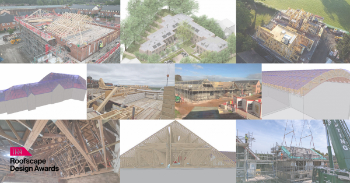Welfare facilities on construction sites
Contents |
[edit] Introduction
There is a legal duty under The Workplace (Health, Safety and Welfare) Regulations 1992, as amended by The Construction (Design and Management) Regulations (CDM Regulations) to ensure that appropriate and adequate welfare facilities are provided at most workplaces.
The provision of welfare facilities should be considered at the planning stages of a project to ensure they are appropriately located.
The CDM regulations require that contractors, as far as is reasonably practicable, provide welfare facilities which meet the minimum requirements set out in Schedule 2 of the regulations for their own employees working on site or anyone else working under their control.
On projects where there is more than one contractor, the client and the principal contractor have a similar duty to ensure suitable and sufficient welfare facilities are provided for before any construction work starts and for the duration of the construction work. The principal contractor should liaise with other contractors involved in the project to ensure appropriate welfare facilities are provided. This should continue throughout the construction phase to take account of any changes which might change the requirement for the provision of welfare facilities.
Schedule 2 of the regulations suggests that the minimum welfare facilities required includes:
- Sanitary conveniences
- Washing facilities
- Drinking water
- Changing rooms and lockers
- Facilities for rest.
[edit] Sanitary conveniences
Clean and tidy toilets (sanitary conveniences) should be provided at easily accessible locations. They should have adequate ventilation and lighting. Ideally, separate male and female toilets should be provided but if this is not possible, as a minimum, rooms with lockable doors are required.
[edit] Washing facilities
Clean and tidy washing facilities with sufficient ventilation and lighting are required next to both toilets and changing areas with the following:
- Hot and cold running water.
- Soap or other cleaning agents.
- Towels or another method for drying hands.
- Showers may be required depending on the nature of the works.
Ideally, separate male and female facilities should be provided but if this is not possible, as a minimum, rooms with lockable doors are required.
[edit] Drinking water
An adequate supply of suitably signed drinking water is required, with suitable cups or other drinking vessels, unless the supply of drinking water is in a jet from which can be drunk easily.
[edit] Changing rooms and lockers
If employees are required to change into specialist clothing, separate male and female changing facilities are required with seating and secure areas for storing personal clothing and protective clothing. In addition facilities for drying wet clothing are required.
[edit] Rest facilities
Adequately heated rest facilities with the appropriate number of seats and tables are required, along with a method for heating drinks and warming food. Where necessary, they should include suitable facilities for a pregnant woman or a nursing mother to rest lying down.
[edit] Related articles on Designing Buildings Wiki
Featured articles and news
Moisture, fire safety and emerging trends in living walls
How wet is your wall?
Current policy explained and newly published consultation by the UK and Welsh Governments.
British architecture 1919–39. Book review.
Conservation of listed prefabs in Moseley.
Energy industry calls for urgent reform.
Heritage staff wellbeing at work survey.
A five minute introduction.
50th Golden anniversary ECA Edmundson apprentice award
Showcasing the very best electrotechnical and engineering services for half a century.
Welsh government consults on HRBs and reg changes
Seeking feedback on a new regulatory regime and a broad range of issues.
CIOB Client Guide (2nd edition) March 2025
Free download covering statutory dutyholder roles under the Building Safety Act and much more.
AI and automation in 3D modelling and spatial design
Can almost half of design development tasks be automated?
Minister quizzed, as responsibility transfers to MHCLG and BSR publishes new building control guidance.
UK environmental regulations reform 2025
Amid wider new approaches to ensure regulators and regulation support growth.
The maintenance challenge of tenements.
BSRIA Statutory Compliance Inspection Checklist
BG80/2025 now significantly updated to include requirements related to important changes in legislation.
Shortlist for the 2025 Roofscape Design Awards
Talent and innovation showcase announcement from the trussed rafter industry.






















